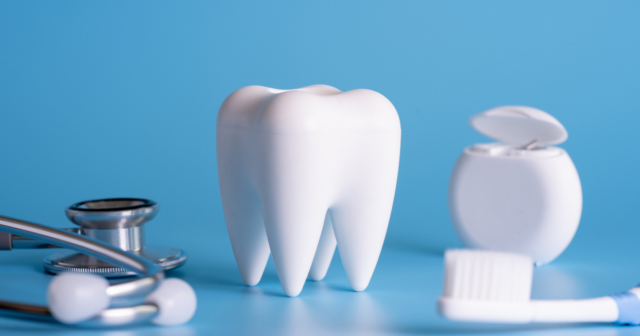Understanding Gingivitis
Gums are part of the periodontium that acts to anchor teeth into the jaw bone and to support the forces of chewing. Normal gums are pink, with smooth margins, not swollen, and do not bleed. Gingivitis is a condition that occurs in up to 80 percent of the population, often without symptoms. The characteristics of gingivitis include red gums, possibly slightly swollen, and a noticeable sign being “bleeding during tooth brushing” which most people assume is caused by brushing too hard or using a toothbrush with bristles that are too stiff.
The Causes of Gingivitis
The cause of gingivitis is “bacterial plaque,” which results from the accumulation of pathogens mixed in saliva onto the teeth. The plaque is a soft, light-colored film that often goes unseen when in small amounts because its color blends with that of the tooth. If plaque is left for a long time, it will lead to mineral accumulation and become “tartar or calculus,” which encourages more bacterial plaque accumulation. Bacteria on this calculus produce toxins that lead to the body’s inflammatory response, resulting in gum inflammation. If left untreated, gingivitis in some patients can progress to “periodontitis” (previously known as pyorrhea), which is the leading cause of tooth loss in adults.
Treating Gingivitis
Gingivitis can be easily treated by scaling (tartar removal) along with developing proper tooth brushing techniques and using appropriate adjunctive tools to prevent new plaque formation that causes the disease. Moreover, most people should have tartar removal every 6 – 12 months.
Understanding Periodontitis
Characteristics of periodontitis include gums not adhering to the teeth along with bone destruction supporting the teeth, detectable by deep periodontal probing, referred to as “periodontal pockets.” This condition arises from bacterial toxins stimulating a significant body response, leading to gum and supporting bone destruction. Early-stage periodontitis often has no symptoms, similar to gingivitis traits, such as slightly to moderately swollen and red gums, and bleeding during tooth brushing. As the disease progresses, leading to significant bone and gum destruction, symptoms might include gum recession, loose or shifted teeth positions, pus and mouth odor, or swollen gums developing into a periodontal abscess. When these symptoms appear, treatment can become complicated, time-consuming, and costly, and in some cases, it might not be possible to save the teeth.
Treating Periodontitis
Once periodontitis has led to bone dissolution, the treatment process becomes more challenging and can be divided into 3 stages:
- The initial stage or disease control stage involves scaling and root planing, which may take several sessions to complete for the entire mouth, depending on the depth of the periodontal pockets and the amount of calculus beneath the gums.
- The corrective stage for patients in a more severe stage, where initial treatment may not remove all the calculus under the gums, requiring some gum surgery in certain areas as needed. In suitable cases, bone graft surgery may also be performed and treatment for periodontitis.
- The maintenance stage is the final phase. Given that the cause of periodontitis is bacterial from saliva accumulation on the teeth, even after completing treatment, if not regularly maintained, the disease can easily recur. Therefore, after treatment, patients should undergo tartar removal to prevent the disease from returning, typically every 3 – 6 months for patients who have had periodontitis.
The Impact of the Disease on Gum Health
Since periodontitis results from the body’s response to bacteria in plaque, factors affecting the immune system can increase the risk of developing periodontitis. Notably significant factors include diabetes and smoking. Diabetic patients have twice the risk of developing periodontitis compared to non-diabetic individuals, and if a diabetic patient cannot control blood sugar levels well, the risk of periodontitis can be up to 11 times higher than in healthy individuals. Similarly, with smoking, however, if patients can control their blood sugar levels well and reduce or quit smoking, the chances of successfully treating periodontitis increase significantly.












